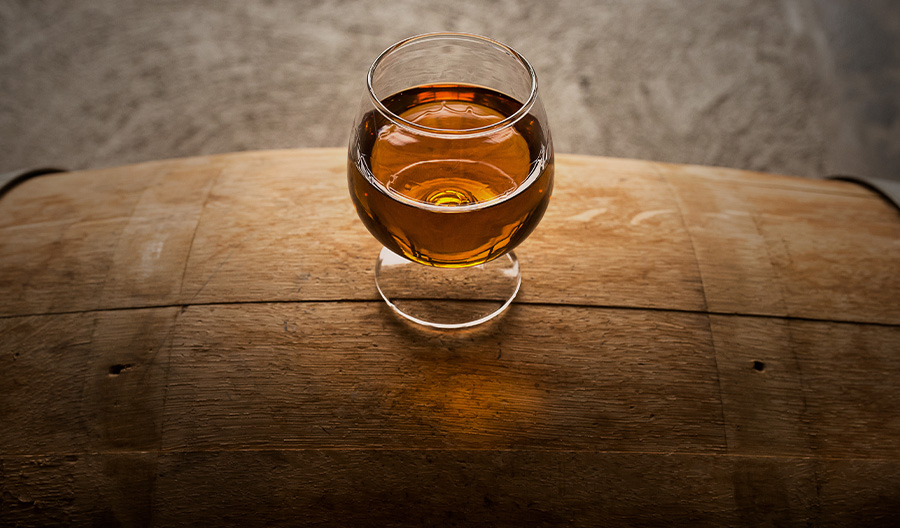Brandy and Cognac are both distilled spirits made from fermented fruit juice, most commonly grapes. However, their characteristics can vary significantly based on the region they come from. For instance, brandy from the Cognac region in France, known as Cognac, is made from specific grape varieties like Ugni Blanc, Folle Blanche, and Colombard. It is double distilled in copper pot stills and aged in Limousin or Tronçais oak barrels, which gives it a complex flavor profile with notes of fruit, flowers, spice, and oak.
Cognac is further divided into six crus or regions, each with its own unique characteristics. Grande Champagne Cognacs are known for their long aging potential and complex, floral flavors. Petite Champagne Cognacs are similar but slightly less refined. Borderies Cognacs are softer and more aromatic, while Fins Bois Cognacs are fruity and mature more quickly. Bons Bois and Bois Ordinaires Cognacs are less prestigious but still offer a good quality spirit.
Outside of France, other regions also produce notable brandies. Spanish brandies, particularly those from the Jerez region, are made using the solera system, which involves a continuous blending process that gives the brandy a consistent, smooth, and complex flavor profile. Spanish brandy can be robust and full-bodied, with notes of dried fruit, nuts, and spice.
In the United States, California is a major producer of brandy. Californian brandies are often made from a variety of grapes and can be either pot or column distilled. They are typically aged in oak barrels, which gives them a smooth and fruity flavor with hints of vanilla and caramel. Some producers also make fruit brandies, using local fruits like apples, pears, and cherries.

How has the history of these regions influenced the production of brandy and cognac?
The history of brandy and cognac production is deeply intertwined with the regions where they are produced. The geographical conditions, climate, and soil composition of these regions have significantly influenced the quality and characteristics of the spirits produced there. For instance, the chalky soil of the Cognac region in France is ideal for growing the Ugni Blanc grapes used in cognac production, contributing to the distinct flavor profile of the spirit.
The historical events of these regions also played a crucial role in shaping the production of brandy and cognac. The Dutch introduced the process of distillation to the French in the 16th century, which led to the birth of brandy. They distilled the wine to preserve it during long sea voyages, and they discovered that the distilled wine, or 'brandewijn' as they called it, was not only more durable but also tasted better.
Moreover, the history of trade and commerce in these regions has had a profound impact on the production of these spirits. The port of La Rochelle in the Charente-Maritime department, for instance, was a significant trading hub in the 18th century. This facilitated the export of cognac to various parts of the world, leading to its global popularity and increased production.
Furthermore, the historical legal regulations have shaped the production of brandy and cognac. The French government established the Appellation d'origine contrôlée (AOC) in the early 20th century, which set strict rules for cognac production. These rules dictate everything from the type of grapes used to the distillation process and aging period, ensuring the quality and authenticity of the cognac.
Lastly, the cultural history of these regions has influenced the production methods and consumption of brandy and cognac. The tradition of enjoying these spirits after meals or using them in cooking has been passed down through generations, and this cultural significance continues to drive their production.

